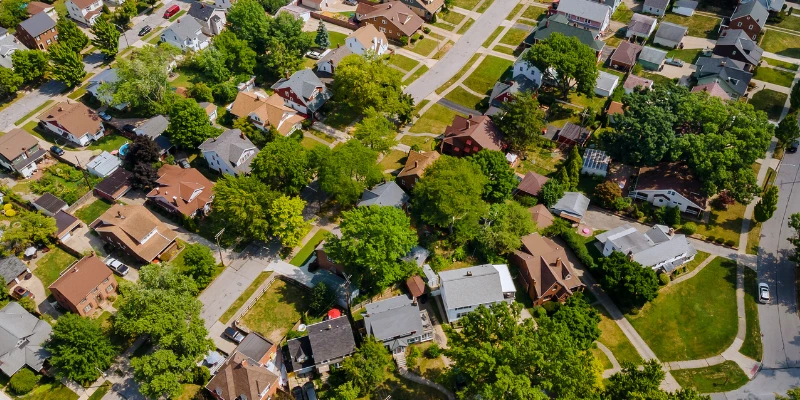Building a Low-Risk Investment Portfolio

We share some great tips to help budding investors build the best property portfolio they can.
Everyone would like a strong property portfolio showing capital growth and high returns. But how do you achieve this and minimise the risk as well? Everyone has their own risk profile; some investors are very risk averse and others know how to mitigate risk. Here are some tips on minimising risk as you build your property portfolio.
Select low-risk areas
This does not mean that you have to stay safe and only buy in the CBD of capital cities. Regional areas in many states are a more affordable option, and capital city performance has been outdone by many of its country cousins that have shown better growth and stronger rental returns in the last few years. By selecting a regional area with a diverse economic base instead of just one dominant industry, you can lower your risk. You do not want the closure of an abattoir, processing plant or mine to impact on you in the future. Large regional areas are much lower risk than a one-horse town.
Have geographical diversity
Many investors only buy property in their home town, home city or home state, believing it to be too risky to buy interstate. If the home market languishes for a while, you may find your portfolio does not perform for a few years. However, buying in diverse locations around the country allows you to minimise your risk by being exposed to many different market cycles. It is more risky to put all your eggs in one basket.
Spotting the drivers of growth
Being able to spot the drivers of growth in a particular area or city is going to reduce the risk of having an underperforming portfolio. Doing due diligence is important and the criteria to look for include a growing population base, new infrastructure projects bringing $$$ and strong employment, a diverse economy, and an undersupply of available housing accommodation. It is the old story of supply and demand that can keep your portfolio strong. Spotting good growth areas may also give you higher rental yields and positively geared properties, which are every investor’s dream for a growing portfolio.
Buying old or new
Reducing risk is also about minimising the holding costs of your portfolio. Buying older properties brings with it risks of high maintenance costs and unexpected expenses that can blow your cash flow projections out the window. Often investors have to sell a property as they are unable to afford the high holding costs. When buying older properties, plan for this in advance and know your bottom line. Buying new properties can reduce the risk of cash flow blowouts as there are warranties from builders and on appliances for many years. There are also the tax benefits of claiming depreciation on new properties (for 40 years) that can improve your cash flow position and take the stress out of holding multiple properties. It is nice to know the taxman and the tenant are paying for your new property and putting money in your pocket as well.
Diversity of property type
For a low-risk portfolio, having many types of investment properties is a smart investment strategy. Building a portfolio with a diversity of houses, apartments and townhouses will increase your chances of meeting the demands of future buyers and renters. The trend is towards smarter, smaller houses that are more eco-friendly, with more energy efficiency. Tenants are very fussy and want less garden maintenance and lower energy bills. Will tenants in newer areas still want big blocks with big houses? Will one-bedroom apartments become more in demand as single household living increases? Buying many different types of property may turn out to be the best thing you ever did.
Achieving the goal
Building a low-risk portfolio to provide for your future financial security through passive income is achievable. Being open to a diversity of locations, property types, and the benefits of new versus older properties, and being able to spot the areas where you will obtain the best growth and rents without the risk can mean the difference between retiring earlier or later.
To discuss this article or anything to do with your finances, please call our office today and we will be happy to assist you.
Disclaimer:
This article is written to provide a summary and general overview of the subject matter covered for your information only. Every effort has been made to ensure the information in the article is current, accurate and reliable. This article has been prepared without taking into account your objectives, personal circumstances, financial situation or needs. You should consider whether it is appropriate for your circumstances. You should seek your own independent legal, financial and taxation advice before acting or relying on any of the content contained in the articles and review any relevant Product Disclosure Statement (PDS), Terms and Conditions (T&C) or Financial Services Guide (FSG).
Please consult your financial advisor, solicitor or accountant before acting on information contained in this publication.
Proudly Part Of

The Money Quest Group (MQG) is one of Australia's leading boutique mortgage broking businesses, with a network of more than 600 brokers nationwide. Known for their exuberant culture and superior support, MQG provides brokers access to a range of financial products from more than 60 lending institutions and suppliers, and exclusive access to in-house benefits and services.
© 2017-2025 MoneyQuest Australia Pty Ltd, Australian Credit Licence 487823